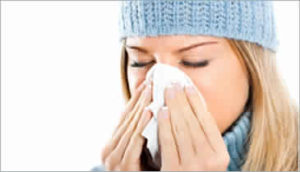 RODALE NEWS, EMMAUS, PA—Winter is a great time to get out and exercise, despite the fact that most people assume that it’s a great time to come down with a cold or the flu. “People are very confused as to whether or not cold temperatures will cause them to get sick,” says David C. Nieman, DrPH, FACSM, professor of health and exercise science and director of the Human Performance Lab at Appalachian State University. But it’s the fact that people congregate indoors where viruses easily spread—not the cold weather itself—that makes these illnesses more prevalent during the colder months, he says. And knowing when to exercise and when to take it easy can lower your risk of getting sick, or even help you get better sooner.
RODALE NEWS, EMMAUS, PA—Winter is a great time to get out and exercise, despite the fact that most people assume that it’s a great time to come down with a cold or the flu. “People are very confused as to whether or not cold temperatures will cause them to get sick,” says David C. Nieman, DrPH, FACSM, professor of health and exercise science and director of the Human Performance Lab at Appalachian State University. But it’s the fact that people congregate indoors where viruses easily spread—not the cold weather itself—that makes these illnesses more prevalent during the colder months, he says. And knowing when to exercise and when to take it easy can lower your risk of getting sick, or even help you get better sooner.
THE DETAILS: It’s fairly well known that exercise can boost immunity. However, Nieman just completed a study finding that it can reduce the severity of cold symptoms, as well. His 1,000-person community trial found that people who were physically active, were lean, and ate a lot of fruit experienced one-third fewer sick days than people who had lower physical activity levels and were overweight. And, he says, “When the active people got sick, their symptoms were less severe,” he says. Previous research by Nieman has found that people who engage in moderate-intensity exercises like walking while they’re sick can cut their sick times by as much as half if they exercise for at least 45 minutes five to six days a week.
WHAT IT MEANS:Exercising while you’ve got the sniffles can speed up recovery, but it’s not always the best medicine if you’ve come down with something more severe. “We have good animal data that if you exercise while you’re seriously ill, you can make the illness more severe and more prolonged,” says Nieman. Exercising with a viral infection can also increase your likelihood of suffering from dehydration and heat stroke. There’s also a chance that something worse could happen: As you exercise, all five liters of your blood will pump through your heart, Nieman says, and if you’ve got a virus, it might concentrate in your heart muscle, leading to a condition called myocarditis.
Stay healthy this cold and flu season with a few exercise tips:
• Rest if it’s below the neck. If you have symptoms from the neck up—a stuffy nose or sore throat—it’s probably just a rhinovirus, which causes the common cold. But when you start to feel achy, or develop a fever, diarrhea, swollen glands, or chest congestion, it’s time to lay off the exercise completely. You most likely have the flu or a chest cold, which Nieman says should keep you at home until all your symptoms have disappeared.
• Slow down. You should still take it easy, even if you’re just suffering from a runny nose. “You may have just taken a medication that dried up your sniffles and you start to feel better,” he says. “But pushing it too hard can make your illness more severe.” Stick with a 45-minute walk and save the heavy-duty run or bike ridefor when you’re feeling better.
• Get back up to speed gradually. The flu can keep you out of the exercise loop for a week or more, so don’t hit the ground running as soon as you feel better. “When your fever’s gone and the worst of the symptoms are pretty much gone, just take an easy walk and see how you respond,” says Nieman. After a symptom-free week of moderate exercise, start easing back into your routine until you’re back to where you were before you got sick.




